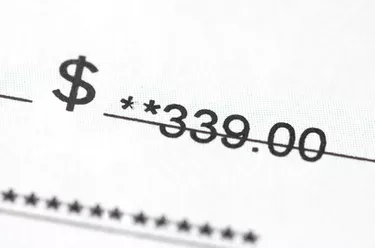
Occasionally you may need to stop payment on a check you have written. Whether the reason is a dispute over the amount, to fight a possible scam or because you realize you have insufficient funds to cover the check, the process is the same. Most banks charge a fee for each stop payment, and a stop payment order remains in effect for only six months. After that, you will need to repeat the process or deal with the check in another manner.
Step 1
Contact your bank as soon as you realize the check cannot be paid. This can sometimes be done online, depending on the bank and whether you are enrolled in online banking. Otherwise, call or visit your branch to speak to a teller.
Video of the Day
Step 2
Request a stop payment, and provide the check number, the amount for which the check was written, the payee and the date written on the check.
Step 3
Verify that the check has not been paid by checking your bank records repeatedly. Your bank will provide you with a written confirmation.
Step 4
Pay any applicable fees.
Step 5
Repeat the process after six months if needed.
Video of the Day